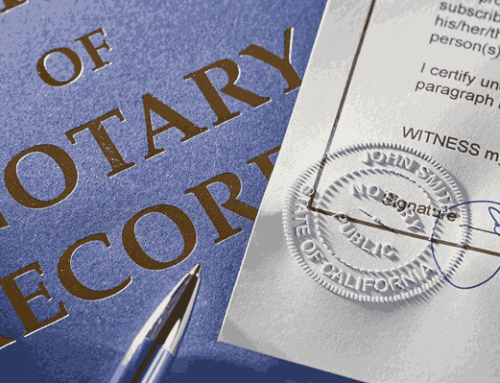According to a survey by the Association of Corporate Counsel (ACC), over 75% of in-house legal departments are experiencing an increased workload, with nearly 60% reporting that their budgets have remained the same or deceased. In the face of these challenges, optimizing workflows within your in-house legal department is not just a luxury—it’s a necessity for survival.
Imagine your legal team as the backbone of your organization, responsible for ensuring compliance, mitigating risks, and driving strategic initiatives forward. However, without streamlined processes and clear communication channels, even the most talented legal professionals can struggle to keep pace with the demands of modern business.
So, if you’re ready to take your legal department to the next level and drive success for your organization, join us on this transformative journey
Understanding Your Legal Department’s Needs
Before exploring more about restructuring, it’s essential to take stock of your current situation. What are the pain points? Where do bottlenecks occur? Understanding these aspects is key to devising an effective strategy for improvement. Conducting a thorough assessment of your department’s needs will provide valuable insights into areas ripe for optimization.
Key Elements of Structuring for Smooth Workflows

Clear Role Definitions
Clearly defining roles and responsibilities within your legal team is fundamental. Ambiguity leads to confusion, which can hamper productivity. By establishing clear job descriptions and expectations, you provide your team with the guidance they need to excel in their respective roles.
Streamlined Communication Channels
Effective communication is the lifeblood of any successful organization, and the legal department is no exception. Implementing efficient communication tools and fostering an environment of open dialogue ensures that information flows freely within the team, reducing misunderstandings and facilitating collaboration.
Utilization of Technology
Leveraging technology like litigation management, document management like MatterSuite is essential for optimizing workflows. Identify and invest in legal tech tools that automate routine tasks, streamline document management, and enhance collaboration. Equipping your team with the right technology empowers them to work smarter, not harder.
Establishing Standard Operating Procedures (SOPs)
SOPs serve as the playbook for your legal department, providing step-by-step guidelines for common processes and workflows. Develop comprehensive SOPs that outline best practices, protocols, and escalation procedures. Regularly review and update these SOPs to ensure they remain relevant and effective.
Implementing Efficient Processes

In any organization, including your in-house legal department, the efficiency of your processes can significantly impact your overall effectiveness and productivity. By streamlining workflows and reducing unnecessary steps, you can not only save time and resources but also improve the quality of your work. Here are some key strategies for implementing efficient processes within your legal department:
One of the most critical aspects of a legal department’s workflow is document management and storage. Inefficient document handling can lead to misplaced files, version control issues, and wasted time searching for important information. To streamline this process:
Centralize Document Storage:
Invest in a robust document management system that allows you to store all legal documents in a centralized location accessible to authorized personnel. Cloud-based solutions offer the added benefit of remote access, enhancing collaboration among team members.
Implement Version Control:
Use version control features to ensure that everyone is working with the latest version of a document. This prevents confusion and errors that can arise from multiple versions circulating within the department.
Organize Documents Effectively:
Develop a logical folder structure and naming conventions for organizing documents. This makes it easier for team members to locate specific files quickly.
Automate Document Creation:
Utilize document automation tools to generate standard legal documents, such as contracts or agreements, quickly and accurately. This reduces the time spent on repetitive tasks and minimizes the risk of errors.
Automating Repetitive Tasks and Processes
Many routine tasks within a legal department can be automated to save time and resources. By leveraging technology and workflow automation tools, you can streamline repetitive processes and free up your team to focus on more strategic initiatives. Here’s how:
Identify Repetitive Tasks:
Conduct an audit of your department’s workflows to identify tasks that are performed regularly and can be automated. This could include tasks such as document review, email management, or compliance checks.
Invest in Automation Tools:
Research and invest in specialized software or tools designed to automate specific legal processes. For example, contract management software can automate contract drafting, review, and approval workflows, while email management tools can categorize and prioritize incoming communications.
Integrate Systems:
Ensure that your automation tools integrate seamlessly with your existing systems and workflows. This eliminates silos of information and allows for smooth data flow between different applications.
Train Your Team:
Provide training and support to your team members to familiarize them with the automation tools and processes. Encourage them to provide feedback and suggestions for further optimization.
Incorporating Technology for Enhanced Efficiency
Technology plays a crucial role in improving efficiency within a legal department. By leveraging the right tools and software solutions, you can streamline processes, improve collaboration, and enhance productivity. Here are some ways to incorporate technology for enhanced efficiency:
Utilize Matter Management Software: Legal matter management software helps legal professionals organize and manage matters/cases more effectively by centralizing matter-related information, tracking deadlines, and facilitating communication with clients and colleagues.
Explore AI-Powered Solutions: Artificial intelligence (AI) technology can be used to automate document review, analyze contracts for potential risks, and even predict case outcomes based on historical data. Integrating AI-powered solutions into your workflows can save time and improve accuracy.
Enable Remote Collaboration: In today’s increasingly digital world, remote collaboration tools are essential for geographically dispersed in-house legal teams. Video conferencing, messaging platforms, and collaborative document editing tools enable team members to communicate and work together seamlessly, regardless of their location.
Stay Updated on Technological Advances: Continuously monitor developments in legal technology to identify new tools and solutions that can further enhance efficiency within your department. Attend conferences, webinars, and training sessions to stay informed about the latest trends and innovations.
By implementing these strategies for efficient processes within your in-house legal department, you can streamline workflows, improve productivity, and better serve the needs of your organization. Embrace technology, automate repetitive tasks, and prioritize efficiency to optimize your department’s performance and contribute to overall organizational success.
Encouraging Interdisciplinary Collaboration within the Legal Department
Effective collaboration and cross-functionality are essential for the success of any in-house legal department. By fostering a culture of teamwork and breaking down silos between departments, you can enhance communication, streamline processes, and achieve better outcomes for your organization. Here are key strategies for promoting collaboration and cross-functionality within your legal department
Cross-Training: Encourage team members to gain exposure to different areas of legal practice through cross-training opportunities. This not only broadens their skill sets but also promotes a better understanding of how different legal issues intersect.
Regular Brainstorming Sessions: Schedule regular brainstorming sessions where team members from different practice areas can come together to discuss challenges, share insights, and brainstorm innovative solutions. This collaborative approach can lead to fresh perspectives and creative problem-solving.
Establishing Collaborative Workspaces: Create physical or virtual collaborative workspaces where team members can easily collaborate on projects, share documents, and exchange ideas. This promotes spontaneous interactions and facilitates teamwork.
Encouraging Open Communication: Foster an environment of open communication where team members feel comfortable sharing ideas, asking questions, and seeking feedback from their colleagues. Encourage active listening and respect for diverse viewpoints.
Summing Up
Structuring your in-house legal department for smooth workflows is not just about efficiency; it’s about driving value and contributing to the overall success of your organization. Embrace technology, foster collaboration, and prioritize communication to optimize your legal department’s performance and make a meaningful impact in today’s dynamic business landscape. With the right structure and mindset, your legal department can become a true strategic asset, driving innovation, growth, and success for your organization.





